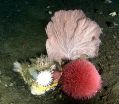The body and the brain: The impact of mental and physical exertion on fatigue development
2015-07-30
(Press-News.org) Do you ever notice how stress and mental frustration can affect your physical abilities? When you are worried about something at work, do you find yourself more exhausted at the end of the day? This phenomenon is a result of the activation of a specific area of the brain when we attempt to participate in both physical and mental tasks simultaneously.
Ranjana Mehta, Ph.D., assistant professor at the Texas A&M Health Science Center School of Public Health, conducted a study evaluating the interaction between physical and mental fatigue and brain behavior.
The study showed that when we attempt mental tasks and physical tasks at the same time, we activate specific areas, called prefrontal cortex (PFC), in our brain. This can cause our bodies to become fatigued much sooner than if we were solely participating in a physical task.
Typically, endurance and fatigue have been examined solely from a physical perspective, focused primarily on the body and muscles used to complete a specific task. However, the brain is just like any other biological tissue, it can be overused and can suffer from fatigue.
"Existing examinations of physical and mental fatigue has been limited to evaluating cardiovascular, muscular and biomechanical changes," said Mehta. "The purpose of this study was to use simultaneous monitoring of brain and muscle function to examine the impact on the PFC while comparing the changes in brain behavior with traditional measures of fatigue."
According to Mehta, study findings show that there were lower blood oxygen levels in the PFC following combined physical and mental fatigue compared to that of just physical fatigue conditions. Through simultaneous examination of the brain and muscle function it is apparent that when participating in highly cognitive tasks, brain resources are divided which may accelerate the development of physical fatigue.
It is critical that researchers consider the brain as well as the body when examining fatigue development and its impact on the body. Interdisciplinary work that combines neurocognitive principles with physiological and biomechanical outcomes can provide us with a comprehensive understanding of what is happening to the body when we perform our daily activities.
"Not a lot of people see the value in looking at both the brain and the body together," said Mehta. "However, no one does purely physical or mental work; they always do both."
This study was published online in Human Factors: The Journal of the Human Factors and Ergonomics Society. Co-author of the study is Raja Parasuraman, Ph.D., professor of psychology at George Mason University in Virginia.
INFORMATION:
ELSE PRESS RELEASES FROM THIS DATE:
2015-07-30
North of the Aleutian Islands, submarine canyons in the cold waters of the eastern Bering Sea contain a highly productive "green belt" that is home to deep-water corals as well as a plethora of fish and marine mammals.
Situated along the continental slope, the area also supports a thriving -- but potentially environmentally damaging -- bottom-trawling fishing industry that uses large weighted nets dragged across the seafloor to scoop up everything in their path.
A new study, conducted by research biologist Robert Miller of UC Santa Barbara's Marine Science Institute ...
2015-07-30
CAMBRIDGE, Mass--Two key physical phenomena take place at the surfaces of materials: catalysis and wetting. A catalyst enhances the rate of chemical reactions; wetting refers to how liquids spread across a surface.
Now researchers at MIT and other institutions have found that these two processes, which had been considered unrelated, are in fact closely linked. The discovery could make it easier to find new catalysts for particular applications, among other potential benefits.
"What's really exciting is that we've been able to connect atomic-level interactions of water ...
2015-07-30
A team of scientists has linked changes in the structure of a handful of central brain neurons to understanding how animals adjust to changing seasons. Its findings enhance our understanding of the mechanisms vital to the regulation of our circadian system, or internal clock.
The work, which appears in the journal Cell, focuses on the regulation of "neuronal plasticity"--changes in neuronal structure--and its function in the brain.
"Neuronal plasticity underpins learning and memory, but it is very challenging to tie changes in specific neurons to alterations in animal ...
2015-07-30
Despite their remarkably similar appearance, the "golden jackals" of East Africa and Eurasia are actually two entirely different species. The discovery, based on DNA evidence and reported in the Cell Press journal Current Biology on July 30, increases the overall biodiversity of the Canidae--the group including dogs, wolves, foxes, and jackals--from 35 living species to 36.
"This represents the first discovery of a 'new' canid species in Africa in over 150 years," says Klaus-Peter Koepfli of the Smithsonian Conservation Biology Institute in Washington, DC.
The new study, ...
2015-07-30
The desire to quit smoking--often considered a requirement for enrolling in treatment programs--is not always necessary to reduce cigarette cravings, argues a review of addiction research published July 30 in Trends in Cognitive Sciences. Early evidence suggests that exercises aimed at increasing self-control, such as mindfulness meditation, can decrease the unconscious influences that motivate a person to smoke.
Scientists are looking to the brain to understand why setting a "quit day" isn't a surefire way to rid oneself of a cigarette habit. Recent neuroimaging studies ...
2015-07-30
A study that took a novel approach to investigating factors affecting the emergence of symptoms of Huntington's disease (HD) has identified at least two genome sites that house variants that can hasten or delay symptom onset. In their report in the July 30 issue of Cell, the multi-institutional research team describes how genome-wide association analysis of samples from more than 4,000 HD patients found that particular variants on two chromosomes were more common in individuals who first exhibited HD-associated movement disorders either earlier or later than would otherwise ...
2015-07-30
Not every mom and dad agree on how their offspring should behave. But in genetics as in life, parenting is about knowing when your voice needs to be heard, and the best ways of doing so. Typically, compromise reigns, and one copy of each gene is inherited from each parent so that the two contribute equally to the traits who make us who we are. Occasionally, a mechanism called genomic imprinting, first described 30 years ago, allows just one parent to be heard by completely silencing the other.
Now, researchers at the University of Utah School of Medicine report on a ...
2015-07-30
A new imaging tool developed by Boston scientists could do for the brain what the telescope did for space exploration. In the first demonstration of how the technology works, published July 30 in the journal Cell, the researchers look inside the brain of an adult mouse at a scale previously unachievable, generating images at a nanoscale resolution. The inventors' long-term goal is to make the resource available to the scientific community in the form of a national brain observatory.
"I'm a strong believer in bottom up-science, which is a way of saying that I would prefer ...
2015-07-30
Oropharyngeal cancer patients who were found to have detectable traces of human papillomavirus type 16 (HPV16) in their saliva following cancer treatment are at an increased risk for recurrence, a study led by researchers at the Johns Hopkins Bloomberg School of Public Health has found.
The oropharynx is the area of the upper throat that includes the back of the tongue, the soft palate, the tonsils and the walls of the throat. Oropharyngeal cancer accounts for 2.8 percent of new cancers in the United States; it is often treated successfully with surgery.
In a small ...
2015-07-30
In the last two decades, prosthetic limb technology has grown by leaps and bounds. Today, the most advanced prostheses incorporate microprocessors that work with onboard gyroscopes, accelerometers, and hydraulics to enable a person to walk with a normal gait. Such top-of-the-line prosthetics can cost more than $50,000.
Amos Winter is aiming to develop a passive, low-tech prosthetic knee that performs nearly as well as high-end prosthetics, at a fraction of the cost.
"We're going after this disruptive opportunity," says Winter, an assistant professor of mechanical ...
LAST 30 PRESS RELEASES:
[Press-News.org] The body and the brain: The impact of mental and physical exertion on fatigue development



